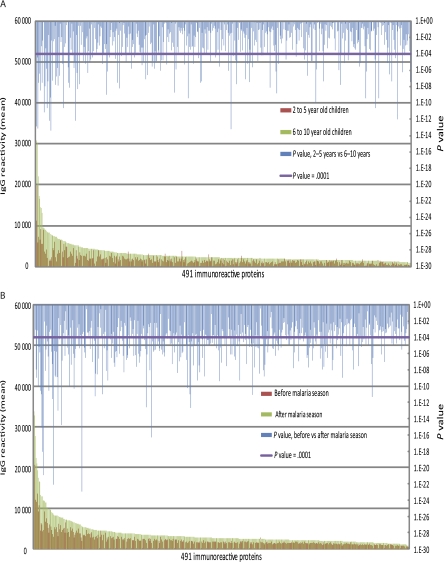Figure 1.
The magnitude of the Plasmodium falciparum–specific immunoglobulin G (IgG) response increases with age and from before to after the malaria season. A, Shown is the average IgG reactivity specific for each of the 491 immunoreactive P. falciparum proteins measured in plasma collected before the malaria season from P. falciparum–uninfected children aged 2–5 y (n = 73) and 6–10 y (n = 68). IgG reactivity specific for 478 of the 491 proteins was higher among children aged 6–10 y, and reactivity to 126 of these remained significantly higher after correcting for the false-discovery rate. B, Shown is the average IgG reactivity specific for each of the 491 immunoreactive P. falciparum proteins measured in plasma collected from all children (n = 141) before and after the 6-month malaria season. IgG reactivity specific for 490 of the 491 proteins was higher after the malaria season, and reactivity to 254 of these remained significantly higher after correcting for the false-discovery rate. The Dunn–Bonferroni method was used to correct for the false discovery rate by setting the level of statistical significance at P = .0001 (β = α/n, where α = .05 and n = 491 tests performed).

